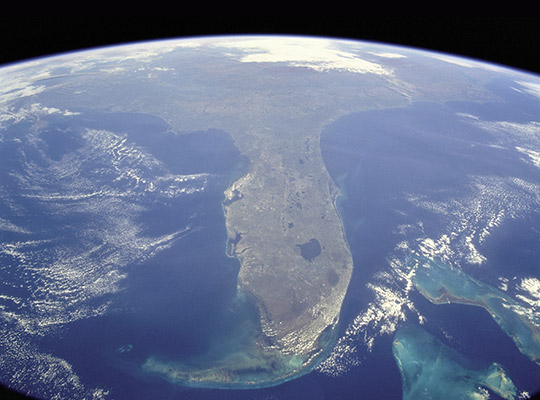Geography
There are many factors that help determine the climate and weather events that are seen across the state of Florida.
Florida stretches from 24°N to 31°N, which spans about 447 miles. During the seasons, the angle of the sun changes, which affects the amount of energy from the sun that reaches the Earth’s surface. The impact of the sun’s energy is greater in the southern part of the state than the northern part, especially in the winter.
The main portion of the state is a peninsula, meaning it is almost completely surrounded by water. Florida is flanked by the Atlantic Ocean on the East, the Gulf of Mexico to the west, and the Florida Straits to the South.
When winds blow over the Gulf Stream, it helps to modify the air. The effects of this ocean current are most visible during the winter months when portions of southern Florida are considerably warmer than other parts of the state.
The westerly prevailing winds are found between 30°N and 60°N, while the easterly trade winds are found between the equator and 30°N. These prevailing winds help steer large-scale weather systems and have a large impact on Florida’s weather and climate.
